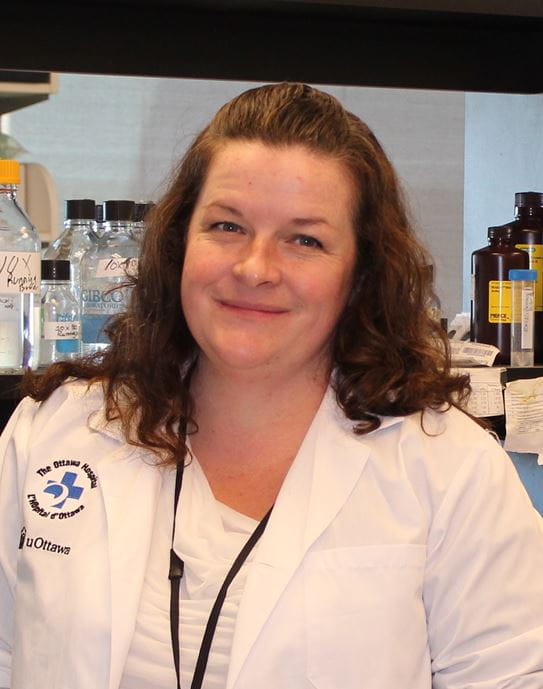October is Breast Cancer Awareness Month and championing world-leading outcomes in breast cancer prevention, early detection, and support is achievable when we work collectively with people united by the same goals. People like Dr Christina Addison and her team, who are creating new tools that they hope will allow people diagnosed with breast cancer to live longer, fuller lives.

Finding inspiration to give people hope for a brighter future
From a young age, Dr Christina Addison had people in her life who helped develop her love for scientific research.
There were many people who significantly influenced me or provided good advice. I remember when my Dad convinced his boss to let me ‘work’ in their lab. Then, as a young teenager, my high school biology teacher Mr Branson made me love cell biology and my PhD supervisor, Dr Frank Graham, challenged me on a daily basis. They all molded me into a person who questions everything and persists in finding answers despite obstacles.
Her mentors shaped her into a person who believes that any question is worth expressing if it will progress our understanding of diseases. And sometimes, even the ones that no one asks are the most important ones to consider.
Working in a cancer therapy lab for her graduate studies helped her see the hope that new scientific discoveries gave to cancer patients. Her career path soon became clear. She wanted to understand how cancer spreads and create tools that could assist in early detection.
“I learned that patients with metastatic cancer have not often benefited from earlier forms of treatment. There is a crucial need to discover alternative therapies from which they may benefit.”
Creating a better tool to find breast cancer cells
Dyes injected into the body that are currently used to help scanners detect breast cancer cells don’t find up to 50% of breast cancers. This means that some cancers are missed. With funding from the Canadian Cancer Society, Dr Addison will develop and test a new dye to find breast cancer cells based on fructose. Fructose is a sugar found in fruits and vegetables and recent research has shown that fructose can be used by breast cancer cells as an energy source. The dye will be tested on breast cancer cells grown in a dish, before seeing if it is able to detect breast cancer cells in mouse models. The researchers then plan to test the new dye on patients in a clinical trial within the next few years. If successful, this new dye will improve the reliability and accuracy of breast cancer detection.
“We hope our research will improve our ability to identify tumour dependencies that facilitate tumour spread in the body,” says Dr Addison.
Investing in the most promising breast cancer research in Canada has helped cut the breast cancer death rate nearly in half since 1986 through improvements in early detection and treatment. But breast cancer is still the most commonly diagnosed cancer and the second-leading cause of cancer death among women. 27, 900 Canadians are diagnosed with breast cancer every year.
Donate to help fund life-saving breast cancer research and compassionate support.
